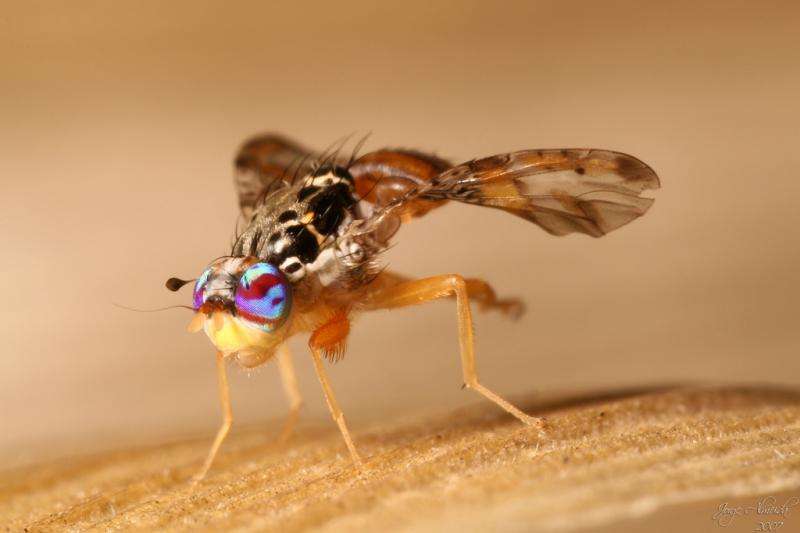Different tools to deal with medfly pest

Research has revealed a management technique involving sterilising the Mediterranean fruit fly (Ceratitis capitata) is a more cost effective alternative of eradicating the pest in the face of a looming pesticide ban.
October 2015 will see WA producers of mangos, citrus, stone fruit and even table grapes unable to use broad-spectrum organophosphate insecticides such as Fenthion and Dimethoate.
WA Department of Agriculture and Food and University of Western Australia research shows that over the long-term, using the Sterile Insect Technique (SIT) to eradicate the pest will be more cost effective than ongoing protein baiting and trapping.
"When compared with pre- and post-harvest costs associated with the baiting and trapping option over the course of a season, cover spraying with organophosphates is a relatively cheap fruit fly control option, costing growers around $10.2 million per year," Dr David Cook says.
"However, because these pesticides are no longer available to fruit producers as a result of public and environmental health concerns the issue now is to determine what the next best management alternative is and what proportion of management costs should be borne by industry and the public."
According to the government's cost-flow analysis, baiting and trapping will cost the state approximately $26.4 million/year compared to ongoing costs of $6.6 million/year for eradication, once initial knock-down is achieved.
Previous studies have shown that getting WA Medfly-free would take six years at an annual cost of approximately $15.7 million, which the researchers say should be shared between government and growers.
Technique introduces sterile males
SIT has been cited as the most environmentally-friendly form of insect control by the International Plant Protection Convention for being species-specific and not requiring the introduction of exotic species into an ecosystem.
SIT involves staged weekly releases of approximately 100 million radiation-sterilised male insects, which compete for mating opportunities.
Over time, this leads to females increasingly laying infertile eggs and thus a reduction in pest population numbers.
SIT was used successfully against the Medfly in Carnarvon in 1978, though a lack of quarantine barriers saw the pest become re-established.
Having effective safeguards against re-introduction is key for the current debate.
"If eradication is successfully achieved, there are a large number of industries to be monitored for breaches of biosecurity protocols and possible Medfly reintroductions," Dr Cook says.
"A solution might be fostering networks of self-monitoring growers who watch their industry or fruit production area and report back to a collective group that can respond quickly to signs of poor management."
Provided by Science Network WA
















